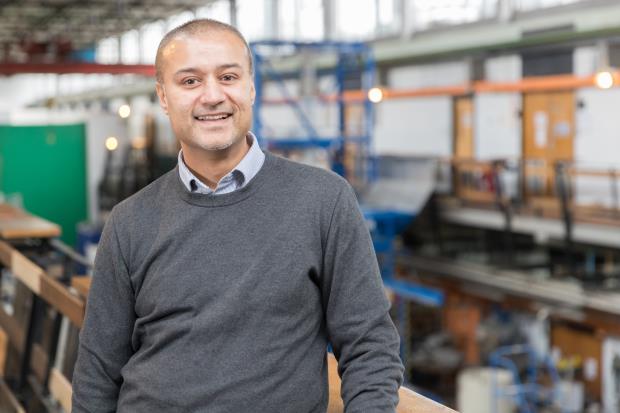All Events /
MAPP Lecture Series - Dr Ifty Ahmed
The MAPP Lecture Series [#MappLecture] began in November 2017 with a lecture by Prof. Richard Leach, University of Nottingham, and will continue in Sheffield in 2019 with regular one-hour lunchtime lectures, from experts in the field of AM. All lectures are open to external attendees and will be followed by lunch and an opportunity to speak with the lecturer.
The seventh lecture in the series will be given on Monday 17th June, in Hadfield Building Lecture Theatre 22 by Dr Ifty Ahmed, University of Nottingham.
Dr Ifty Ahmed is part of the Advanced Materials Research Group. His areas of expertise include, Phosphate-based glass production and characterisation including Phosphate glass-fibre (PGF) production.Recent work has also focused on manufacture of resorbable biocomposites using PGF as reinforcement to tailor mechanical properties and resorption characteristics, mainly for bone repair applications. Applications for these resorbable biocomposites span fracture fixation devices including, plates, screws and intramedullary nails. Ifty is also currently working on manufacture of microspheres (ranging from 60-350 microns diameter) from a range of materials to include glasses, glass ceramics and polymers. These microspheres have been produced in both bulk and porous forms, with a wide range of porosity levels. Alternate research investigations have included calcium phosphate cements and drug delivery materials. Main interests include Biomaterials, Bioengineering, Tissue Engineering and Regenerative Devices.
'Manufacturing Micro Spherical and Porous Particles from Glasses and Glass Ceramics'
Abstract
Silicates and more recently Borate-based glasses have achieved great success for use in biomedical applications. However, Phosphate-based glasses have also been widely explored and offer greater versatility as their degradation profiles can be fully controlled. As the principal chemical constituent of bone mineral is calcium phosphate, these glasses are ideal candidates as they mainly contain P2O5, CaO and Na2O (and can easily incorporate many other oxides). Increasing or decreasing the oxide components or incorporating others enables further control over their dissolution rates (which can range from a day/s, week/s, months to years). We have recently developed solid (non-porous) and highly porous microspheres from the above mentioned glass materials (including glass-ceramic, namely apatite wollastonite), via a single-stage manufacturing process. The lab-scale process developed can also deliver yields of between 1-2 kg per hour. The porous microspheres developed from phosphate-based glasses are being explored for orthobiologic applications via stem cell incorporation, with a view to develop a prophylactic fracture prevention treatment option for elderly osteoporosis patients. The porous microsphere manufacturing process has also been applied to other materials, which are being explored for alternate applications (such as water treatment). As such, the manufacturing process is considered to be a potential platform technology.
The lecture will be followed by lunch in the Turner Museum.


